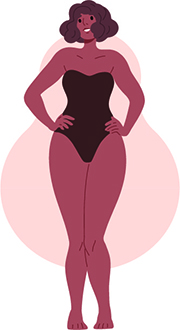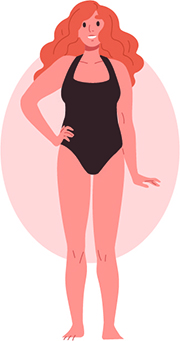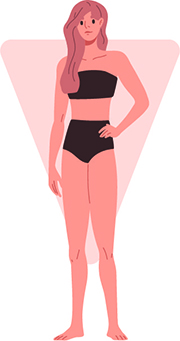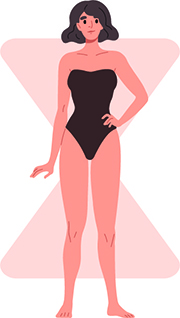International sewing patterns
International
sewing patterns
No language barrier · 9.500 patterns from 37 countries · incl. translation help
No language barrier · incl. translation help
9.500 patterns from 37 countries
Linen fabric
What is linen and the benefits of linen fabric?
Linen is a natural fiber made from the cellulose fiber of the flax plant. It that has been used for thousands of years and it's history reaches back to the Egyptian times. Linen has been known and used well before people started using cotton fabric for their clothing. The word "linen" comes from the Latin word lina meaning "flax". Today, linen is still one of the world's most popular fabrics.
Linen is one of the best fibers for making clothing because it is breathable, absorbent, light weight and resistant. In addition linen fabric has great durability. Furthermore it is antibacterial and soft on your skin. Therefor it is the perfect fabric for hot and humid summer days. But it can also be used for bedding and other home accessories. Linen fabrics come in different colors, textures, and patterns. The natural linen fibers are beige or beige-grey colored. But there is also the possibility to bleach and color the fabric in many different beautiful colors. The two main types of linen include cotton/linen blends and pure linen. Pure linen is the original fabric made from flax fiber and has been used for centuries. Cotton/linen blends are fabrics that are made out of a mix of cotton and linen fibers. Cotton and linen blends are a bit cheaper than pure linen due to their cotton percentage. Usually the fabrics are plain-woven linen.
Manufacturing linen is really time consuming and resource intensive, which is why linen fabrics tend to be more expensive than cotton fabrics. But Linen is also way more durable and breathable than cotton, so it's worth its higher price.
A bit of history
As mentioned earlier linen fabrics have a long history and are one of the longest produced textiles on this planet. The use of linen in ancient egypt was wide spread but there's even archaeologist evidence that linen was known before egyptian times. Linen was perfect for the egyptian hot and humid climate and since linen is naturally white or beige it was able to resist the strong sun. Also in ancient greece linen was used for garments and homewear. Later in history linen then came to Europe, where Ireland in the 18th century became the center of European linen production. Nowadays, as the cotton production is easier and cheaper, linen is not as famous as it used to be. But linen fabrics are still well known and popular for their benefits.
How Linen fabrics are produced
The flax plants take about 100 days of growth until they are ready for harvesting. Most flax plants can be found in Kazakhstan, Russia, Canada and China. Nowadays the plants are usually sown and harvested with the help of machines. When the plants are harvested the leaves and seeds are removed from the flax stalks and the fibers are being removed from the wooden part of the stalk. The process of removing the fibers is also called 'retting'. The next step is called 'breaking'. During this step the decomposed stalks are broken up into smaller pieces, which separates the usable inner fibers and unusable outer fibers. Next up the fibers are being 'combed' into thin strands and separated from other fibers. When all the flax fibers are removed from the stalk and comed, they can then be spun into linen yarn. The spinning is done by industrial machines these days. The yarn is then being used to weave the final linen fabrics. The fabrics can be kept in their natural color. But there's also the possibility to bleach and color them in different colors or the print them with interesting patterns.
What are linen fabrics used for?
Linen is the perfect fabric, especially for summer clothing and hot climates. The main advantage of linen is that it is super lightweight, breathable and dries quickly. Furthermore it is also antibacterial, which means that bacteria and germs usually do not survive in the fine fibers of linen. You can use your linen fabric for many different clothing types like light trousers or shorts, blouses, dresses, skirts and even jackets.
Like mentioned earlier Linen fabrics are often used in bedding and linens because they're comfortable, durable, soft and dry quickly. You can use white linen for a classic bedding or use nice and beautiful colors for an interesting touch of color in your bedroom. Not only that, but because linen fibers are rather porous, they're also very good conductors of heat, making them not only breathable but also warm, cozy and comfortable.
You can also use linen fabrics in different colors for an interesting arrangement of pillows. Furthermore linen fabrics are great for table cloths, napkins and tea towels. And even window treatments like lightweight linen curtains can be made out of the fabric. Obviously you can also make bath towels or even bags out of linen fabric. You can just get really creative.
How can I take care of my Linen fabric?
Linen can be washed in the washing machine, so you don't have to hand wash your fabric. But pay attention to the temperature, so that your linen fabric won't shrink. Because linen tends to wrinkle you should let your fabric air dry and not toss it in the dryer. When it comes to ironing your fabric, you should always use humidity or a wet cloth between your fabric and the iron, so you're not damaging the fabric with the heat. Usually Linen is a very durable fabric so with the right care you can keep it for many years.
How Does Linen Fabric Impact the Environment?
Linen fabrics are made from flax fibers which are grown in fields where they are harvested and then processed into yarns. There are concerns over flax production or textile production in general because the production process requires large amounts of water. In addition, the use of pesticides and herbicides during the growing process can pollute the soil, rivers, and oceans. But there's also the option to buy certified organic linen fabrics which are more expensive. Unfortunately not only linen textiles but the whole textile production industry is a huge problem for environmental and also human reasons.
However Linen fabrics are one of the least damaging textiles as they are made out of cellulose fiber and are natural fabrics. In comparison to synthetic fabrics, they're biodegradable and do not contain any chemicals.
If you want to make sure you're buying linen fabric, that was produced under fair conditions and without any methods that could harm the environment you can buy certified linen that meets the Global Organic Textile Standards (GOTS). There's also other certificates you can rely on, for example the OEKO-TEX Label.
90% PDF or Freebooks - immediately available
Categories
Filter selection
What is my body shape?

Pear
- Narrow shoulders
- Slim waist
- Strong hips/ thighs
- Round bottom

Rectangle
- Slim, straight stature
- Small bust
- Straight waist
- Small bottom

Round
- Large bust
- Pronounced body center
- Strong thighs
- Slim legs

Inverted triangle
- Broad shoulders
- Medium to large bust
- Rather straight waist
- Slim legs

Hourglass
- Narrow shoulders
- Slim waist
- Stong hips/ thighs
- Round bottom
Linen fabric
Linen fabrics are well known and used not only for clothing, but also for bed linens, tablecloths and so much more. Linen fabric has a lot of great qualities, which is why the fabric is really popular. In the following we gathered a lot of information, tips and tricks for you, so that your next sewing project with linen fabrics is going to be a huge succes.
more seen below...
Welcher Körper-Typ bist Du?

A-Typ - Birne
- Schultern schmal
- Taille schlank
- Hüften/ Oberschenkel kräftig
- Po rund

H-Typ - Banane
- Statur schlank, gerade
- Oberweite klein
- Taille gerade
- Po klein

O-Typ - Orange
- Oberweite groß
- Körpermitte ausgeprägt
- Hüften kräftig
- Beine schlank

V-Typ - Apfel
- Schultern breit
- Oberweite mittel bis groß
- Taille wenig ausgeprägt
- Beine schlank

X-Typ - Sanduhr
- Schulter + Hüfte ähnlich breit
- Oberweite groß
- Taille schlank
- Po rund



